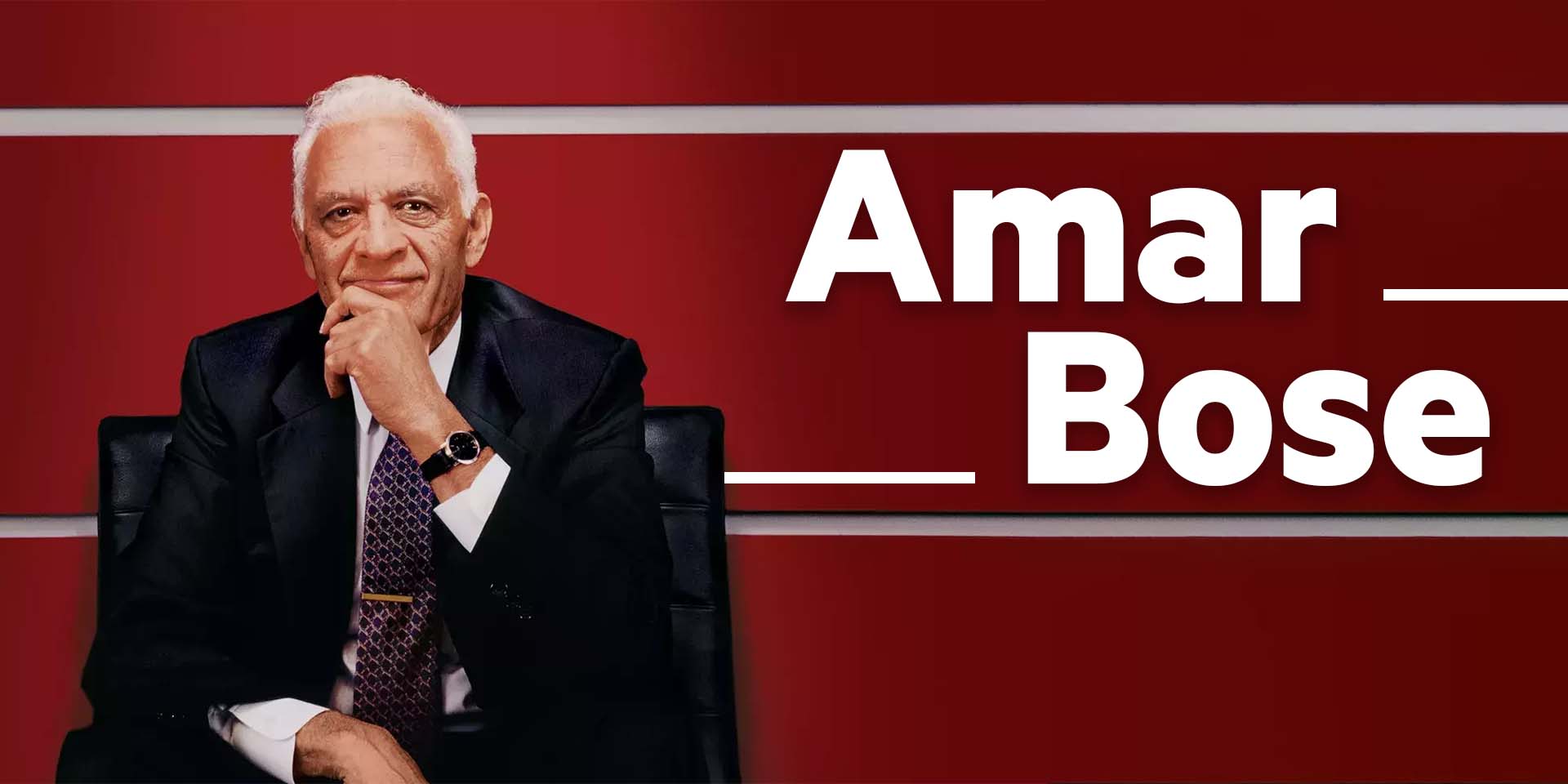Amar Bose: The Man Behind The World"s First Noise Canceling Headphones
Have you ever experienced recorded music that was so clear and vibrant that made you feel as though you were really present at a live performance? It is likely that Indian American inventor Amar Bose"s improvements to speaker technology are what led to this. He was the pioneer of acoustics and the man behind the Bose Corporation.

Bose, an MIT professor and the CEO of his own company that he founded from humble beginnings up, has achieved ground-breaking results in an astounding array of fields, ranging from nuclear physics to aviation and acoustics to defense. The tension and disarray that frequently dominate the higher levels of the technology business were well counterbalanced by Amar Bose. A professor, researcher, and businessman with extensive education, he dedicated his creativity and hard work to the constant pursuit of the best possible digital sound experience.
Originally, Amar Bose was not a member of the privileged class. His father was a freedom fighter who fled the British government in India and came to the United States with barely anything. His mother was a teacher.
From repairing radios to entrepreneurship
-
Amar Bose was early in his experimenting with electrical equipment.
-
During World War II, when repair professionals were in short supply, he managed to make some money by fixing radios and toy trains.
-
He then founded a successful radio repair company.
-
Bose"s early commercial ventures likely contributed to his eventual success as an entrepreneur, which he attained gradually after graduating from the Massachusetts Institute of Technology (MIT) with degrees in business, master"s, and doctorate.
The Educational Legacy of Bose
-
Although Amar Bose"s company made him wealthy and well-known around the world, he lectured at MIT until 2001.
-
The bulk of Bose Corporation"s equity was donated by him to his alma mater, MIT, two years prior to his death in 2013.
-
He did this in the hopes that the income from those shares would fund MIT"s research and its objective of training the next generation of researchers and innovators.
Research and development carried out by Amar Bose
-
As an engineering student at MIT in the 1950s, he purchased a costly stereo system.
-
But, dissatisfied with the quality of the sound, he began to consider methods to improve it.
-
According to his own studies, 80% of the sound at concerts and film theaters reached the ears of the audience inadvertently i.e. after bouncing off walls, furniture, and so on.
-
This was in striking contrast to stereo systems at the time, which sent sound waves directly to the listener.
-
In 1968, he introduced the Bose 901 Direct Reflecting speakers, which cemented Bose Corporation"s position as a market leader.
-
The model was so popular that the business produced it for over 50 years until discontinuing it in 2017. This loudspeaker is the company"s longest-running product.
-
He went on to create the Bose noise cancelling headphones, which have become standard equipment for defense forces and airlines all over the world, as well as the Bose Wave Radio.
What led to the development of the noise cancelling headphones?
-
The inspiration to develop the noise cancelling headphones came to Amar Bose in an airplane.
-
Dr. Amar Bose was returning to Boston from an official tour in Europe in 1978.
-
He was testing out an entirely novel electronic audio headphone provided by the airline, which had replaced the old stethoscope-style headsets.
-
Instead, this headset had ear cups that housed speakers.
-
Even yet, the interior roar from the jet engines made it difficult to hear the music. Increasing the volume simply added to the distortion.
-
Amar Bose"s intellectual interest awakened, he questioned if it was feasible to create noise-cancelling technology. He began drawing mathematical formulas from his seat.
-
Bose created a team of engineers dedicated to overcoming the challenging acoustic, electrical, and mechanical problems of noise canceling headphones from those early attempts.
-
This led to the development of the ground-breaking noise reduction technology.
-
Bose noise-cancelling headphones have become standard equipment for military personnel working in high-noise areas, such as US Air Force pilots and tank crews, as well as private and commercial pilots.
Awards and accolades
-
Amar Bose was still working at MIT after establishing Bose Corporation in order to assist the company"s research. In 2001, he retired from MIT.
-
He was one of the top educators at MIT. Indeed, many of his pupils have credited him with assisting them in developing practical and problem-solving skills.
-
In 1964, he received the Baker Teaching Award.
-
To honor him for his contributions to electronics and the establishment of MIT, MIT set up the Bose Award for Excellence in Teaching (1989) and the Junior Bose Award (1995).
-
During his lifetime, Dr. Bose received several accolades and distinctions.
-
He was a fellow of the Institute of Electrical and Electronics Engineers and a member of the National Academy of Engineering and the American Academy of Arts and Sciences.
-
He was also elected into the National Inventors Hall of Fame in 2008.
After years of acoustic and psychoacoustic research, Amar Bose founded the "Bose Corporation" in 1964. Bose"s creation of noise cancelling headphones revolutionized the audio business. It allowed users to take pleasure in high-quality sound despite loud surroundings without turning up the volume to unsafe levels. Bose headphones are currently among the most costly products on the market.
Dr. Amar Bose, the visionary and founder of the Bose Company died on 12th July 2013. Even after his death at 83 years, his legacy lives on in the form of Bose Corporation and continues to inspire the young generation.
